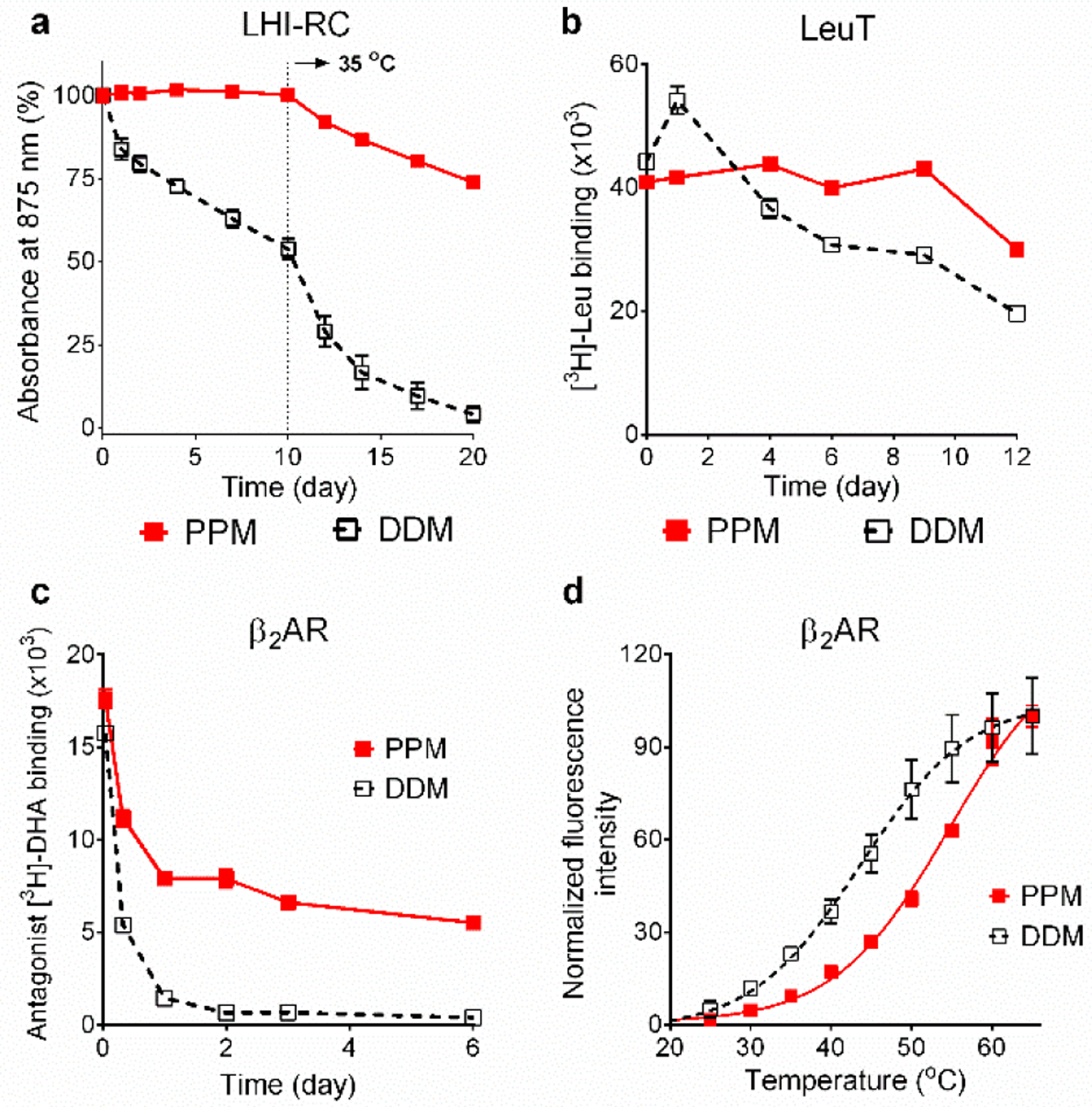Figure 2.

Stability of LHI-RC complex (a), LeuT (b) and β2AR (c,d) solubilized in PPM or DDM. LHI-RC stability was assessed by monitoring the absorbance of the complexes at 875 nm (A875) at regular intervals during a 20-day incubation. LeuT stability was assessed by measuring the ability of the transporter to bind the radio-labeled substrate (3[H]-leucine (Leu)) at regular intervals during a 12-day incubation at room temperature via scintillation proximity assay (SPA). β2AR stability was assessed by measuring the receptor ability to bind the radio-labelled antagonist ([3H]-dihydroalprenolol (DHA)) during a 6-day incubation at room temperature (c) or by measuring the melting temperature (Tm) of the receptor using CPM assay (d). The detergents were tested at CMC+0.05 wt% for LHI-RC, CMC+0.04 wt% for LeuT, 0.2 wt% (ligand binding assay; c) or 0.1 wt% (CPM assay; d) for β2AR. As for the LHI-RC complex study, the incubation temperature was increased to 35 °C after the first 10-day incubation at room temperature. Error bars: SEM, n = 2 (LHI-RC); n = 2–3 (LeuT); n = 3 (β2AR).
